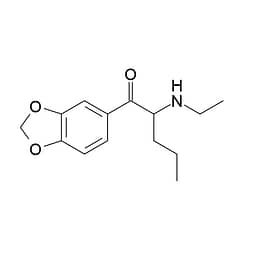Description
Understanding N-Ethylhexedrone Hydrochloride: Uses, Risks, and Safety Measures
N-Ethylhexedrone Hydrochloride is a synthetic stimulant that has garnered attention in recent years. Known for its potency and effects similar to those of other cathinones, this compound has become a subject of interest for both researchers and users. This article delves into what N-Ethylhexedrone Hydrochloride is, its potential uses, associated risks, and important safety measures.
What is N-Ethylhexedrone Hydrochloride?
N-Ethylhexedrone Hydrochloride, often abbreviated as NEH, is a synthetic cathinone, a class of compounds structurally similar to amphetamines. It is chemically related to hexedrone, differing primarily by the addition of an ethyl group. This modification impacts its pharmacological profile, making it a powerful stimulant.
Chemical Structure and Properties
N-Ethylhexedrone Hydrochloride is typically found in the form of a crystalline powder. Its chemical structure allows it to cross the blood-brain barrier efficiently, leading to rapid onset of effects. The hydrochloride form is often chosen for its stability and solubility, which facilitates various methods of administration.
Potential Uses of N-Ethylhexedrone Hydrochloride
Although N-Ethylhexedrone Hydrochloride is not approved for medical use, it has been studied for its potential applications in scientific research.
Research Applications
1. Neuroscience Research: NEH is used in studies investigating the effects of stimulants on the central nervous system. Researchers aim to understand its mechanism of action, which may provide insights into the functioning of other stimulant drugs.
2. Pharmacological Studies: By studying NEH, scientists can better understand the pharmacokinetics and pharmacodynamics of synthetic cathinones. This research can contribute to the development of new therapeutic agents and improve our knowledge of drug interactions and effects.
Risks and Side Effects
The use of N-Ethylhexedrone Hydrochloride, especially outside a controlled research setting, carries significant risks.
Short-Term Effects
– Euphoria and Stimulation: Users often experience intense euphoria, increased energy, and enhanced focus. These effects are due to the release of neurotransmitters like dopamine and norepinephrine.
– Agitation and Anxiety: As with other stimulants, NEH can cause agitation, anxiety, and paranoia, particularly at higher doses.
Long-Term Risks
– Addiction and Dependence: Regular use of N-Ethylhexedrone Hydrochloride can lead to physical and psychological dependence. The drug’s ability to release high levels of dopamine reinforces compulsive use behaviors.
– Cardiovascular Issues: Chronic use can strain the cardiovascular system, leading to hypertension, tachycardia, and an increased risk of heart attacks.
– Neurological Damage: Prolonged exposure may result in neurotoxicity, potentially causing long-term cognitive deficits and mood disorders.
Safety Measures and Harm Reduction
Given the potential dangers of N-Ethylhexedrone Hydrochloride, it is crucial to adopt safety measures to minimize risks.
Responsible Use
– Dosage Control: Always measure doses accurately. Starting with a low dose can help gauge individual sensitivity to the drug.
– Avoid Frequent Use: Limiting the frequency of use can reduce the risk of developing tolerance and dependence.
Seeking Medical Advice
– Medical Supervision: If considering using N-Ethylhexedrone Hydrochloride for research or any other purpose, consult with a healthcare professional for guidance.
– Emergency Preparedness: Be aware of the symptoms of overdose, such as severe agitation, hyperthermia, and chest pain. Have a plan to seek immediate medical attention if these symptoms occur.
Legal Considerations
– Regulatory Status: Check the legal status of N-Ethylhexedrone Hydrochloride in your region. Many countries have strict regulations or bans on synthetic cathinones due to their potential for abuse and harm.
– Compliance: Ensure that any acquisition or use of NEH complies with local laws and regulations to avoid legal repercussions.
Conclusion
N-Ethylhexedrone Hydrochloride is a potent synthetic stimulant with significant effects on the central nervous system. While it has potential research applications, the risks associated with its use are considerable. Understanding these risks and adhering to safety measures is essential for anyone involved with this compound. Always prioritize safety, legality, and responsible use to mitigate the dangers associated with N-Ethylhexedrone Hydrochloride.
















Susan –
These people are invariably polite, professional and easy to do business with. I strongly recommend Nikkostores.
Satisfied long time U.S. customer